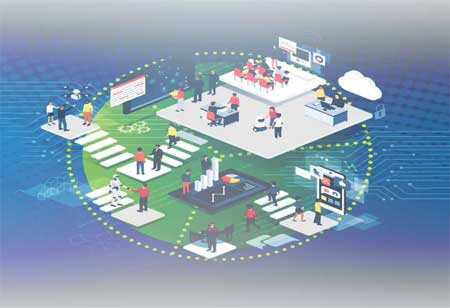THANK YOU FOR SUBSCRIBING
How AI in Smart Energy Solutions Can Improve Customer Satisfaction
AI in smart energy solutions enhances grid efficiency, customer satisfaction, outage management, demand-side management and cybersecurity, driving a smarter and more sustainable energy future.

By
Apac CIOOutlook | Thursday, September 05, 2024
Stay ahead of the industry with exclusive feature stories on the top companies, expert insights and the latest news delivered straight to your inbox. Subscribe today.
AI in smart energy solutions enhances grid efficiency, customer satisfaction, outage management, demand-side management and cybersecurity, driving a smarter and more sustainable energy future.
FREMONT CA: Integrating AI in smart energy solutions transforms how energy providers enhance customer satisfaction by delivering more efficient, personalized and reliable services. AI-powered technologies enable real-time energy consumption monitoring, predictive maintenance, and energy use optimization, allowing customers to manage their energy needs better and reduce costs. Additionally, AI helps energy companies anticipate customer demands, streamline services and offer tailored solutions that align with individual preferences.
Agility and Resilience
With the rise of renewable energy generated by new partners like cooperatives and prosumers, energy production often becomes intermittent and variable. This variability challenges the grid but can be managed through sensors and automation. These technologies help identify vulnerable parts of the grid and respond with automated energy rerouting. Surplus energy can be stored during peak generation times and efficiently rerouted during periods when the flow decreases, enhancing the grid's agility and resilience.
More Precise Forecasting
Price variability in the utilities sector is expected due to fluctuating consumption patterns. Predictive analytics models can more accurately predict power loads and renewable energy generation. Combining data from advanced metering infrastructure (AMI) with AI tools allows for more reliable forecasting than traditional methods, enabling utility companies to manage power supply and demand better.
Sophisticated Outage Alerts
Smart grids equipped with sensors, meters and actuators can provide a “last gasp” signal during power losses, transmitting the time and date of an outage. AI's predictive capabilities can notify operators of impending outages when integrated with real-time smart-meter data. These systems can distinguish between individual, street, or zonal outages, allowing for more targeted and quicker responses to power disruptions.
Optimized Power Yield
AI-powered sensor networks are revolutionizing power generation by optimizing power output. This is especially useful in renewable energy sectors such as solar, where AI tools can predict solar radiation and enhance productivity. By improving efficiency at the generation stage, these tools maximize the yield from renewable energy sources.
Automated Switching
AI tools are paving the way for enhanced automated switching protocols. By predicting grid imbalances and differentiating between brief interruptions and complete outages, AI systems can reroute energy or isolate affected areas in real-time, minimizing damage and preventing outages from spreading. This proactive approach ensures the safety and integrity of essential equipment and helps with faster fault isolation and repair.
Flexible Demand-Side Management (DSM)
Peaks in energy demand put tremendous pressure on utility companies, but AI and smart meters in homes and offices offer solutions. These technologies assist in scheduling, planning, executing, and monitoring energy demand changes, ensuring providers can meet spikes in consumption. According to the U.S. Federal Energy Regulatory Commission, effective demand-side management can reduce peak loads by up to 150 GW. The Electric Power Research Institute (EPRI) predicts these smart tools could cut summer peak demand by 175 GW by 2030.
Enhanced Security
Cyberattacks continue to become more complex, so cybersecurity is crucial for existing and new electrical grids. AI tools provide robust protection by detecting network attack features, identifying malware, and preventing intrusions. Additionally, technologies like blockchain can enhance security by creating tamper-proof, transparent systems. When combined with smart contracts, these tools provide novel business solutions while safeguarding critical infrastructure from cyber threats.
By offering real-time insights, predictive capabilities and tailored energy management options, AI empowers customers to control their energy usage more while optimizing provider operations. As AI technologies evolve, they will play a pivotal role in fostering transparency, responsiveness, and reliability within the energy sector. This integration improves customer experiences and paves the way for a smarter, more sustainable energy future.





